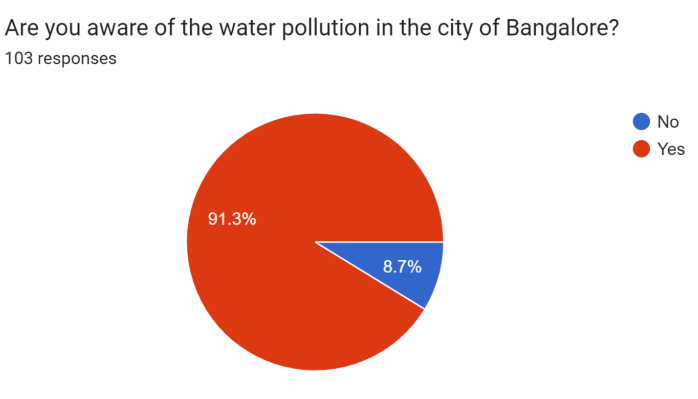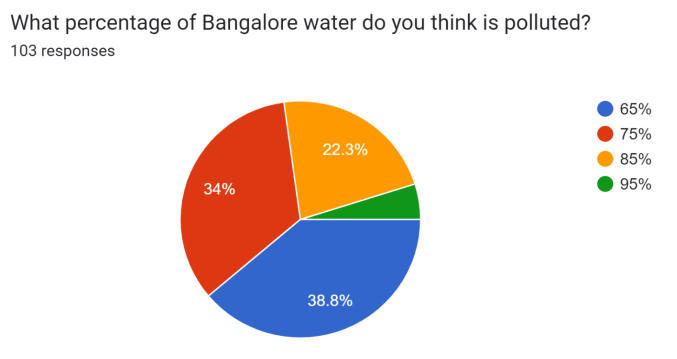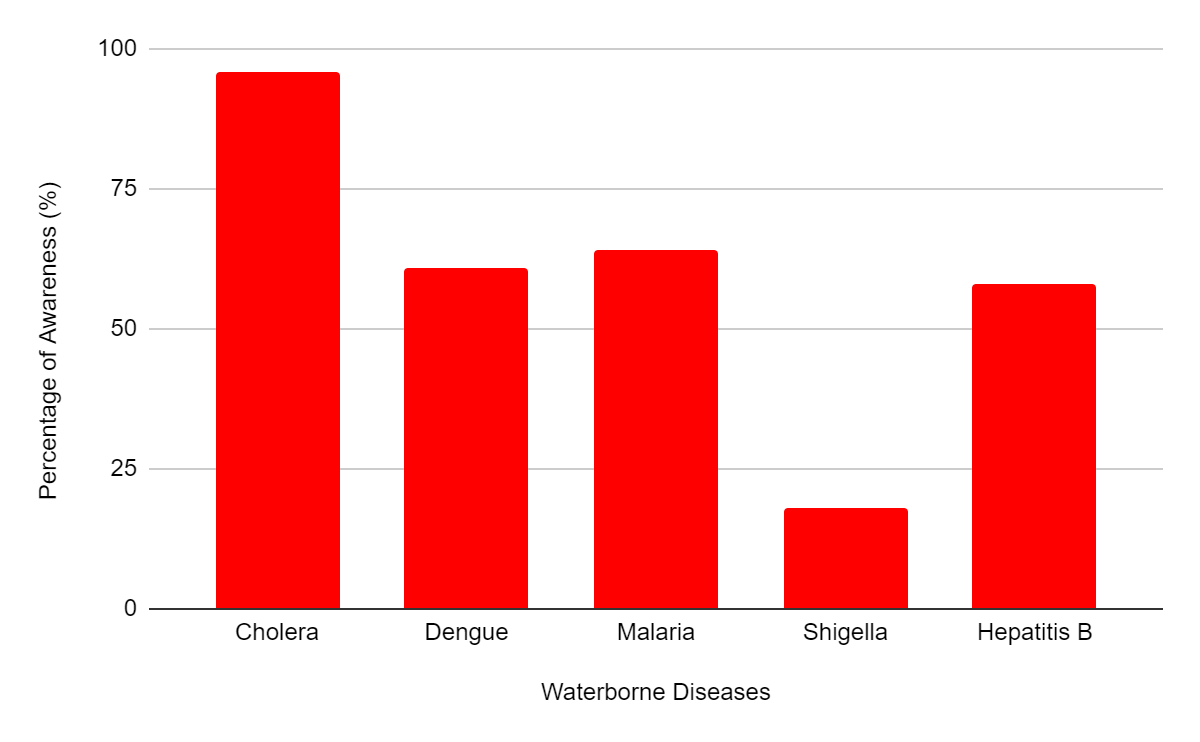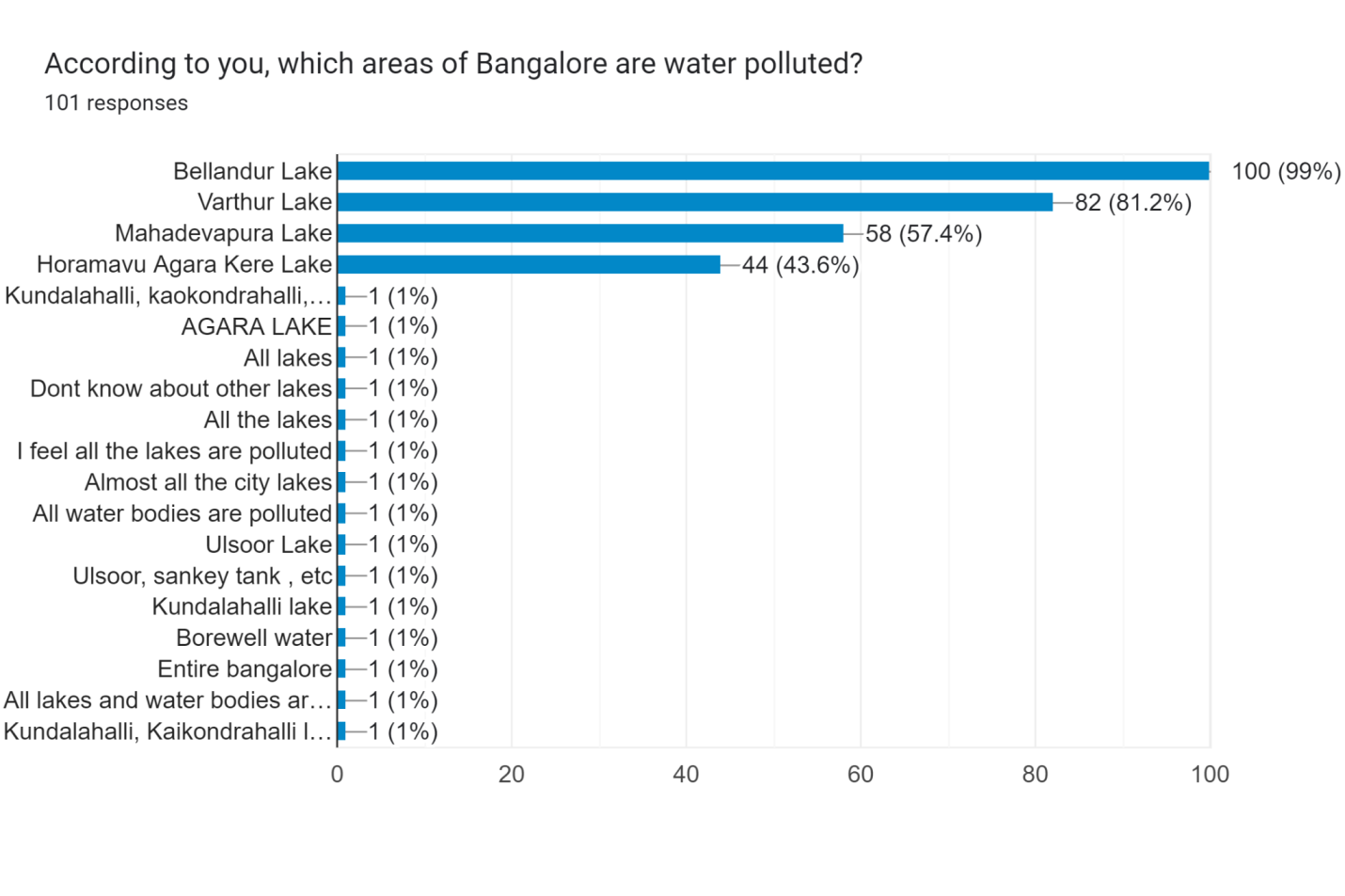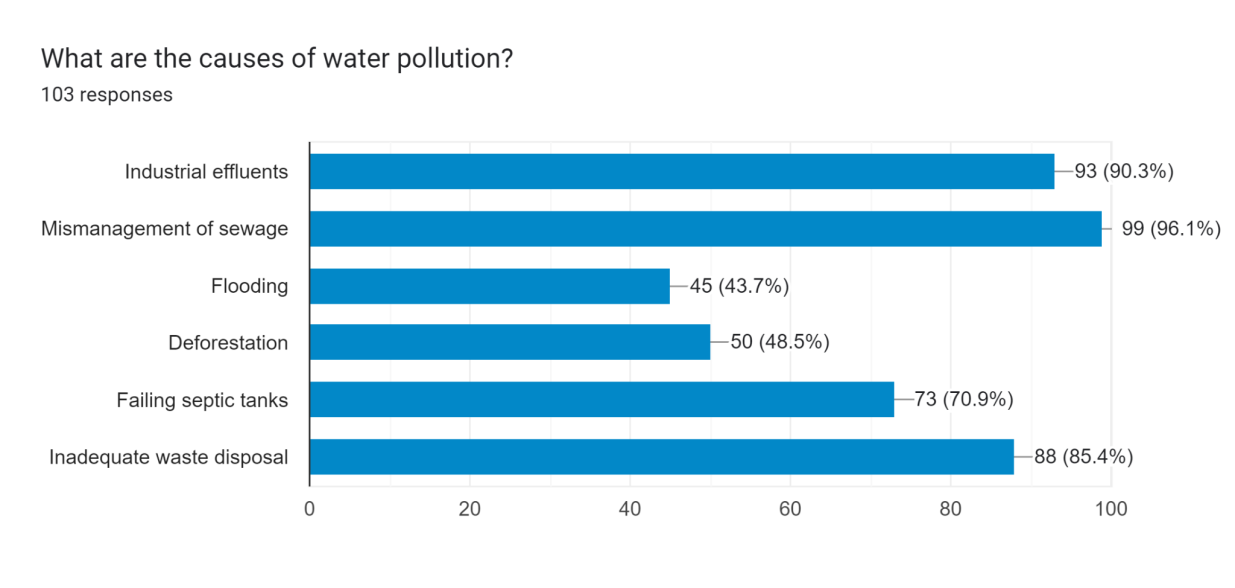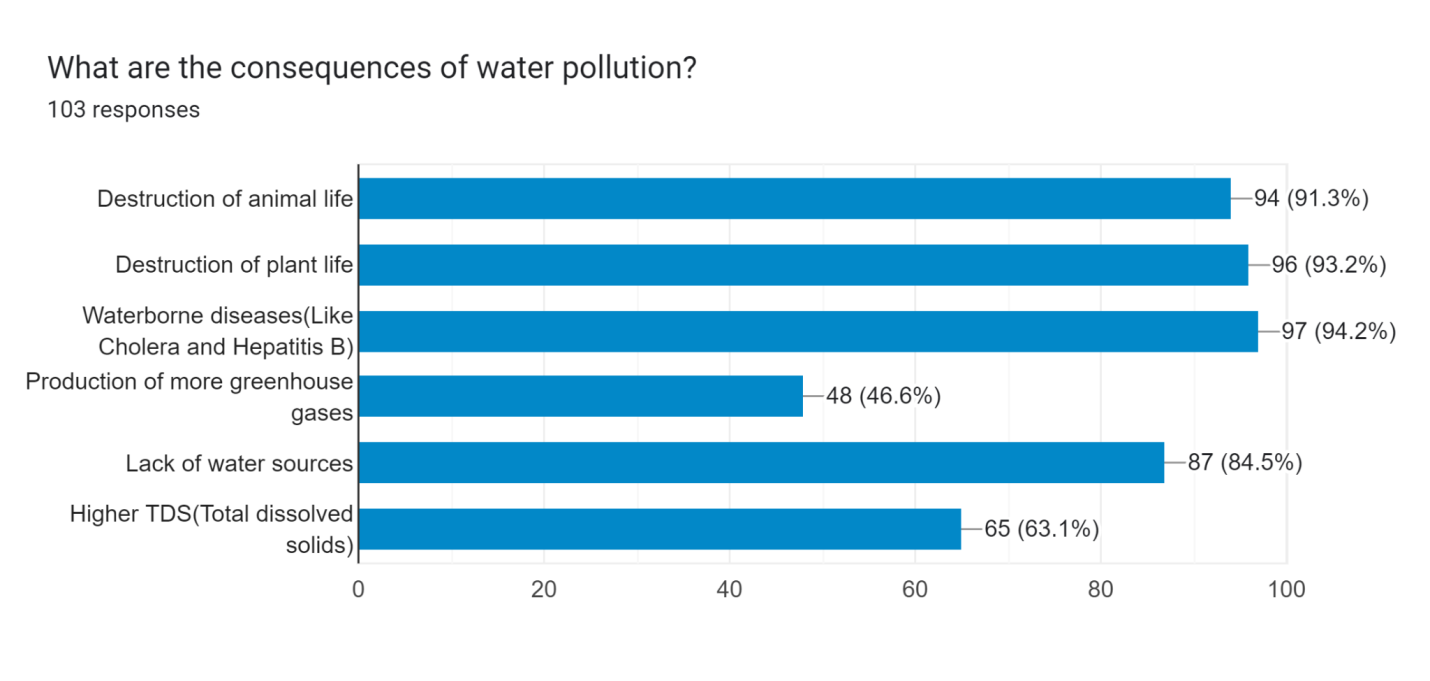Water Pollution in Bangalore City: A Threat to Sustainable Development Goal 6
- Mr. Raghav
- Dr. Jonas Richard A
- 781-791
- Oct 3, 2023
- Water Pollution
Water Pollution in Bangalore City: A Threat to Sustainable Development Goal 6
1Mr. Raghav, 2Dr. Jonas Richard A
1Neev Academy, Bangalore
2Professor & Head, Dept. of Social Work, Kristu Jayanti College, Bangalore
DOI: https://dx.doi.org/10.47772/IJRISS.2023.70966
Received: 08 August 2023; Revised: 27 August 2023; Accepted: 30 August 2023; Published: 03 October 2023
ABSTRACT
While there has been extensive research done on water pollution in Bangalore and its increasingly pernicious effect on local water bodies and communities, little has been done to collate information on local solutions to water pollution. This research paper aimed to research the causes of water pollution, consequences of water pollution, awareness levels of water pollution, and local suggestions and recommendations to help mitigate water pollution. Results of secondary research through literature and primary research using a google form on one hundred and three respondents showed that most residents, both within a kilometer and beyond that are aware of the presence and consequences of water pollution. However, there is much variance regarding possible solutions to water pollution in rural or slum-based communities. Nevertheless, this study narrowed down a few effective and salient suggestions to improve water pollution, such as waste relocation and watershed production.
Keywords: Water Pollution, SDG 6, contamination, Industrial pollution, Awareness Levels, Causes, and Consequences.
INTRODUCTION
At one point, Bangalore was known as ‘the city of lakes because of the large number of water bodies that scattered the region. Even now, it is a city with more than a hundred lakes and a thousand water bodies. As time passed, however, most of these bodies, and especially the major lakes like Varthur and Bellandur, were subjected to high levels of pollution. Bangalore’s industrial growth has contributed to water pollution. Karnataka State Pollution Control Board (KSPCB) stated in 2021, industrial units in and around Bangalore were discharging a substantial amount of untreated or partially treated effluents into water bodies, contaminating them. Consequently, many locals and long-term residents who relied on the bodies of water either for income, sustenance, or both, suffered great economic, environmental, and medical setbacks to their way of life. The link between SDG 6 and water pollution is central to achieving sustainable development and ensuring universal access to clean water and adequate sanitation for all. SDG 6 focuses on “ensuring availability and sustainable management of water and sanitation for all” and encompasses several targets related to water quality, pollution reduction, and ecosystem protection. Addressing water pollution is vital to achieving SDG 6 and broader sustainable development. Governments, communities, and businesses must collaborate to implement effective water pollution control measures, invest in wastewater treatment, promote sustainable industrial practices, and raise awareness about responsible water usage to safeguard water resources and achieve the targets outlined in SDG 6.
To further contextualize the extent of this issue, the researcher has used the conditions set forth by the sixth Sustainable Development Goal (Clean Water and Sanitation) to identify areas and local methods of improvement regarding this city’s water-body ecosystems. The relevant goals of the sixth SDG are to protect and restore water-related ecosystems, to improve water quality by reducing pollution, and to support and strengthen the participation of local communities in improving water and sanitation management.
While there are four other goals, they are not as pertinent to this article at the moment. The goal of this paper is to investigate the causes, consequences, and possible solutions to water pollution with the aid of a community sample. This research has drawn from the literature review of sources describing the causes and consequences of water pollution in Bangalore. This study focused on the relevant content related to the issue and then narrowed the research to a few major topics such as water-borne diseases.
Overall this study is aimed at finding out the causes of water pollution, consequences of water pollution, awareness levels of water pollution, and local suggestions and recommendations to help mitigate water pollution.
Consequences of Water Pollution in Bangalore City
Contamination of drinking water sources is a serious problem caused by water pollution. It affects not only human health but also the economy, and it is a major concern in Bangalore. Central Pollution Control Board highlighted that around 50% of the water samples collected from various locations in the city was found to be contaminated with fecal coliform bacteria, which can cause various water-borne diseases. Additionally, water sources in the city are also affected by heavy metals, pesticides, and other pollutants, which can have harmful effects on human health. The situation is alarming as it is estimated that around 80% of the city’s population is dependent on groundwater as a source of drinking water. Bangalore Water Supply and Sewerage Board (BWSSB) mentioned that the water quality in the city has been deteriorating over the years, with the number of areas where water is not fit for drinking increasing from 51 in 2017 to 63 in 2019.
The death of life within the aquatic ecosystem due to water pollution is a serious problem in Bangalore. According to a study by the Indian Institute of Science, around 80% of the city’s lakes have been affected by water pollution, with many of them showing signs of eutrophication, a process where excess nutrients lead to an overgrowth of algae and other aquatic plants. This can lead to a decrease in oxygen levels in the water, making it difficult for fish and other aquatic life to survive. Statistics show that the death of aquatic life is a major problem in the city. Karnataka State Pollution Control Board found that the number of fish deaths in the city’s lakes had increased from around 2,000 in 2015 to over 8,000 in 2018. Additionally, a study by the Bangalore Development Authority found that the number of fish species in the city’s lakes had decreased from around 40 in the 1990s to just 20 in 2019.
Water pollution can cause significant damage to agriculture in Bangalore, as pollutants in the water can affect the growth and yield of crops, and the health of livestock. Indian Institute of Science once stated water pollution in the city is affecting the growth of crops such as paddy, sugarcane, and vegetables, with a reduction of up to 20% in crop yields observed in some areas. Additionally, around 75% of the water samples collected from agricultural fields in the city were found to be contaminated with pesticides, which can have harmful effects on crops and soil health discussed by Central Pollution Control Board.
Water pollution in Bangalore can lead to the production of more greenhouses. When water sources are polluted, it can be difficult for farmers to grow crops using traditional methods. As a result, some farmers may turn to greenhouse farming as a way to protect their crops from the effects of polluted water. Greenhouses can provide a controlled environment for crop growth, which can help to mitigate the effects of water pollution. Indian Institute of Science stated water pollution in the city has led to a significant increase in the number of greenhouses in the surrounding areas. The study found that the number of greenhouses in the region had increased by more than 50% between 2015 and 2018.
Water pollution in Bangalore is seriously impacting tourism in the city. Over 70% of the city’s water bodies, including lakes and rivers, are severely contaminated with pollutants such as sewage and industrial waste. This has led to the closure of several popular tourist spots, such as Ulsoor Lake and Sankey Tank, due to the high levels of toxicity in the water. In addition, the city’s once-thriving fishing industry has been devastated, with fish populations declining by over 60% in recent years. These impacts not only harm the local environment and economy but also discourage tourists from visiting the city.
Water-borne diseases, as the name suggests, are transmitted through the ingestion of contaminated water. These diseases are present inside water in the form of pathogenic microorganisms. Some of the more lethal and widespread water-borne diseases include cholera, shigella, typhoid, and hepatitis (A and E). While the large-scale impact of these diseases cannot be denied, many of the water-borne disease cases around the world are not reported due to incorrect diagnoses or no diagnosis at all. The majority of water-borne diseases are diarrheal. Their outbreaks are often credited to bacteria, protozoa, and parasites that thrive in specific physical conditions (like at the peak of summer). Additionally, the total disregard for basic hygiene along with crumbling or non-existent infrastructure leads to people having a higher risk of contracting said afflictions.
Relationship of water pollution and water borne diseases in Bangalore
The relation between water pollution and waterborne diseases in Bangalore city is a significant concern that highlights the interconnectedness of environmental and public health issues. Water pollution refers to the contamination of water bodies, such as lakes, rivers, and groundwater, with harmful substances, including pollutants, chemicals, and pathogens. This pollution can lead to the spread of waterborne diseases, which are illnesses caused by consuming or coming into contact with contaminated water. In the context of Bangalore city, several factors contribute to the relationship between water pollution and waterborne diseases:
- Industrial Pollution: Bangalore’s rapid urbanization and industrial growth have led to increased discharge of pollutants into water bodies. Effluents from industries can contain toxic substances and heavy metals that contaminate water sources. When people consume or use this contaminated water, it can result in various waterborne diseases such as gastrointestinal infections, skin diseases, and even long-term health issues.
- Waste Disposal: Improper disposal of domestic and commercial waste, including plastic and other non-biodegradable materials, can clog waterways and contribute to water pollution. Stagnant water bodies become breeding grounds for disease-carrying vectors like mosquitoes, which can lead to diseases like malaria and dengue.
- Sewage Discharge: Inadequate sanitation infrastructure in certain areas of Bangalore can lead to the direct release of untreated sewage into water bodies. This introduces harmful pathogens like bacteria, viruses, and parasites into the water supply, causing diseases like cholera, typhoid, and hepatitis.
- Agricultural Runoff: The use of pesticides and fertilizers in agriculture can result in runoff that contains harmful chemicals. When these chemicals enter water sources, they can contaminate the water supply and lead to various health issues when consumed by humans or animals.
- Unregulated Development: Rapid urbanization and construction can lead to deforestation and soil erosion. Sediments from construction sites can flow into water bodies, altering their quality and potentially introducing contaminants.
- Groundwater Contamination: The contamination of groundwater sources due to improper disposal of hazardous waste or leaking septic tanks can result in long-term pollution of drinking water sources. This can lead to the gradual build up of pollutants and the spread of waterborne diseases over time.
- Climate Change Effects: Changes in weather patterns and increased temperatures due to climate change can influence water quality and the prevalence of disease-carrying vectors. This can exacerbate the spread of waterborne diseases in the city.
Addressing the relationship between water pollution and waterborne diseases in Bangalore requires a multi-faceted approach. This includes improving sanitation infrastructure, regulating industrial discharges, promoting responsible waste disposal practices, implementing effective wastewater treatment, and raising public awareness about the importance of clean water and its impact on public health.
SAMPLING AND METHODOLOGY
To reiterate, the goal of this study is to understand the causes of water pollution, the consequences of water pollution, and the awareness levels of water pollution amongst residents, and local suggestions and recommendations to help mitigate water pollution. The study was conducted with 103 respondents having 30 questions on different segments on water pollution and its impact.
This sampling process was descriptive in nature. The researcher used a Google Form as the sampling tool for this study as it allowed for the widest number of people to contribute to the goal of my study (Convenience sampling). There were four major sections present in the form, which essentially covered the field of study across central Bangalore: participant demographics, their awareness of what water pollution is and its consequences, their awareness of the causes of water pollution, and possible solutions they might have to problems associated with water pollution. The goal of this questionnaire is to help understand how residents from various parts of Bangalore perceive water pollution and how they think it can be solved. At the end of the study, their solutions can be compared to existing systems put into place to combat water pollution.
Since the research tool was used online, the sampling technique was largely convenience-based. This was the most feasible way of gathering results from a large number of responders. Another reason this method and tool of sampling worked well since the field of study would benefit most from a descriptive research design.
RESULTS & DISCUSSION ON PARAMETERS OF THE QUESTIONNAIRE
Section-1-Demographics
1. Gender: (73.8% Female, 26.2% Male)
2. Area of Residence: 70% of the respondents were from the Whitefield area.
- This variable asks for the participant’s area of residence. It was especially important to the study to understand the certain geographic section of the city and therefore increase the diversity of my sample body.
3. With regard to the age group, the majority of respondents were in the age group of 46 – 50 years.
4. All of the participants have at the least graduated from twelfth grade.
5. Most of the participants stayed in Bellandur and Sarjapur, however, there was a spread of responses from areas such as RT Nagar, Whitefield, HSR Layout, Ulsoor, and others.
Section-2- and its consequences Awareness Level of Water Pollution:
- Self-assessment of awareness of water pollution
- This is a binary yes or no question meant to assess whether participants are aware of water pollution. The question helps, for the study, determine how many participants thought themselves to be aware of water pollution.
2. Percentage of water that participants think is polluted
- Now that participants have been asked whether they were aware of water pollution, they are given a series of options ranging from 65% to 95% with increments of 10% and asked to choose which option most likely reflects the amount of water that is polluted in Bangalore. The correct answer is 85% as per a study conducted by the EMPRI.
3. Diseases caused by water pollution
- As seen from the literature review, water-borne diseases are amongst the most lethal consequences of water pollution. This question asked participants whether they were aware of these diseases happening to people they knew directly. The purpose of this question is to gauge at a smaller scale the influence of water pollution on health.
4. Checklist of consequences of water pollution
- This part of the study was added not only to ensure that participants can communicate the extent to which they were aware of the consequences of water pollution but to also allow participants to think about the effects of water pollution they might not have consciously identified before.
5. Checklist of water bodies that are known to be polluted
- This part of the study helps us analyze another facet of the participant’s knowledge regarding their immediate exposure to the water bodies around them. Another way in which this question helps is that it gives me a good idea of which water bodies are more and less known as polluted bodies of water. These results can be compared to the actual pollution of the water bodies in Bangalore to see whether any correlation exists.
Section-3-Awareness Level of Causes of Water Pollution:
6. Checklist of causes of water pollution
- This element serves the same purpose as asking the participants about the consequences of water pollution.
Section-4-Recommendations
7. Participant suggestions.
- This question is especially important to the study. Knowing about local solutions to water pollution is crucial because it can help individuals and communities take action to address the problem at a grassroots level. While larger-scale solutions such as regulations and industrial waste management are essential, local solutions can also play a significant role in mitigating pollution, which is why the answers to this question might help shed light on some of the possible courses of action that the city can take towards a cleaner Bangalore.
FINDINGS RELATED TO THE PARTICIPANT AWARENESS
Figure No: 01 – Awareness on the water pollution in Bangalore city
- It has been interpreted that, the majority of the participants are well aware of the level of water pollution within Bangalore with most of them (91.3%) knowing that it exists. This is unsurprising considering the amount of attention given to the consequences of water pollution online and over social media.
Figure No: 02 – Awareness on the percentage of water pollution in Bangalore city
Less than forty percentage of the respondents (38.8%) expressed that 65% of the water polluted in the city whereas one third of the respondents (34%) stated that 75% of the water polluted in the city of Bangalore. These findings reflect the perceptions of the respondents and their understanding of the severity of water pollution in Bangalore. It’s important to note that these percentages are based on the opinions of the surveyed individuals and might not accurately represent the actual levels of water pollution.
Figure No: 03 – Awareness on the water borne diseases through water pollution
As an additional note, more than fifty percentage of the respondents (53%) reported not having heard of diseases apart from these five. We can see here that Cholera (96.2%) was the most well heard of disease. Through the above findings, it can be inferred that a majority of the surveyed individuals were not familiar with diseases beyond a specified list, and Cholera was the most recognized disease among them. Public awareness of diseases is crucial for public health efforts and interventions. For less familiar diseases, educational campaigns and outreach programs might be necessary to improve understanding and awareness. It’s also important to ensure accurate information is disseminated to the public to prevent misconceptions or misinformation.
Figure No: 04 – Awareness on the water polluted areas in Bangalore
Most participants correctly identified the four or five most polluted areas of Bangalore with Bellandur, Varthur, Mahadevapura, and Agaralake having the highest percentage of responses. This indicates that these areas are widely recognized for their pollution issues among the respondents. The recognition of specific pollution hotspots can be valuable for local authorities, environmental agencies, and community groups to target pollution control measures and interventions in these areas. It also suggests that public awareness about the pollution problem in these regions is relatively high, which could potentially lead to increased community engagement and efforts to address the pollution concerns in these areas.
Figure No: 05 – Awareness on the causes of water polllution
The largest number of participants (96.1%) selected “mismanagement of sewage” to be a cause of water pollution, while the least number of participants (43.7%) selected “flooding” as a cause of water pollution. From this data, it can be deduced that a vast majority of participants recognize “mismanagement of sewage” as a significant cause of water pollution. This highlights the importance of proper wastewater management and treatment to prevent contamination of water bodies.
On the other hand, a relatively smaller percentage of participants identified “flooding” as a cause of water pollution. Flooding can indeed lead to water pollution by carrying pollutants from various sources into water bodies, but the lower percentage of participants selecting this option might indicate a need for further education and awareness about the relationship between flooding and water pollution.
Figure No: 06 – Awareness on the consequences of water pollution
- The largest number of participants (94.2%) selected “waterborne diseases” to be a consequence of water pollution, while the least number of participants (46.6%) selected “production of more greenhouse gasses” as a cause of water pollution, which is surprising. It is inferred that water pollution has severe consequences on the environment, human health, and economies. Polluted water bodies disrupt aquatic ecosystems, leading to reduced biodiversity, fish kills, and algal blooms. Contaminated water poses health risks to humans, causing waterborne diseases and long-term health problems. The pollution of drinking water sources leads to increased medical costs and economic burdens on communities. Moreover, impaired water quality affects agriculture, as contaminated water for irrigation negatively impacts crop yields and food safety. Industries reliant on water face increased operational costs due to the need for advanced treatment processes. The economic losses from water pollution are substantial, including reduced tourism revenue, devaluation of properties near polluted water bodies, and increased costs for clean-up efforts.
RECOMMENDATIONS AND SUGGESTIONS
These are the most common and effective (as corroborated with research) recommendations and suggestions given by the respondents.
- Proper waste management: Encourage responsible disposal of household waste and recycling to prevent pollutants from entering the waterways.
- Limit chemical usage: Minimize the use of fertilizers, pesticides, and herbicides, especially near the lake’s shoreline, to prevent runoff into the water.
- Adopt eco-friendly cleaning products: Use environmentally friendly and biodegradable cleaning products to minimize the introduction of harmful chemicals into the lake.
- Maintain septic systems: Regularly inspect and maintain septic systems to prevent leaks and ensure proper functioning to prevent contamination of groundwater and nearby lakes.
- Reduce storm water runoff: Implement measures like rain gardens, permeable pavement, and retention ponds to capture and filter storm water runoff before it reaches the lake.
- Support watershed protection: Get involved in local watershed protection programs and advocate for policies that safeguard water quality in the entire watershed, not just the lake.
- Organize lake clean-up events: Coordinate community clean-up events to remove trash, debris, and pollutants from the lake and its surrounding areas.
- Install buffer strips: Establish vegetation buffer strips along agricultural areas to reduce the amount of sediment, nutrients, and chemicals reaching the lake.
- Promote responsible fishing: Encourage catch-and-release practices, adhere to fishing regulations, and educate anglers about the potential impacts of certain fishing practices on water quality.
- Monitor water quality: Support or participate in water quality monitoring programs to identify pollution sources and take appropriate action to address them.
- Educate the community: Raise awareness about water pollution issues, its impacts on the ecosystem, and how individuals can contribute to solving the problem.
- Advocate for policy changes: Engage with local government officials and organizations to advocate for stricter regulations and policies aimed at preventing water pollution and protecting lake ecosystems.
CONCLUSION
In conclusion, the research objectives were pursued with the intent of shedding light on the complex relationship between water pollution and its effects on public health, public awareness, and the identification of pollution sources in the context of Bangalore city. The findings of this study have provided valuable insights into these areas, contributing to a deeper understanding of the challenges and opportunities presented by water pollution.
The high level of awareness among participants regarding the most polluted areas in Bangalore underscores the urgency of addressing pollution hotspots and implementing targeted interventions. The recognition of “mismanagement of sewage” as a leading cause of water pollution by a vast majority of respondents emphasizes the critical need for improved wastewater management systems and practices.
Furthermore, the observed variation in participant responses regarding the causes of water pollution, such as the comparatively lower recognition of “flooding,” highlights the importance of continued public education and awareness campaigns. Effective communication and dissemination of accurate information are essential to foster a comprehensive understanding of the multifaceted nature of water pollution and its contributing factors.
The study also underscores the vital role of public awareness in combating waterborne diseases. While diseases like cholera enjoy widespread recognition, efforts should be directed toward enhancing awareness of lesser-known waterborne illnesses. Public health initiatives must focus on bridging the knowledge gap and promoting preventive measures to mitigate the risks associated with waterborne diseases.
In essence, this research has not only illuminated the current state of awareness and perceptions surrounding water pollution and its implications but has also provided valuable guidance for future policies, interventions, and educational campaigns aimed at safeguarding water resources, public health, and the overall well-being of the residents of Bangalore city. By addressing the identified gaps in knowledge and awareness, stakeholders can work collaboratively to create a cleaner, healthier, and more sustainable environment for all.
REFERENCES
- Chandra, H.S., et al. “Assessment of water pollution in Bangalore using multivariate statistical techniques.” Environmental Monitoring and Assessment, vol. 184, no. 7, 2012, pp. 3891-3903.
- Khan, Aslam. “Water pollution and its impact on the environment: A case study of Bangalore city.” Journal of Environmental Science and Technology, vol. 10, no. 6, 2017, pp. 346-358.
- Krishnamurthy, R.R., and B.S. Dasappa. “Assessment of groundwater quality and its pollution sources in Bangalore, India.” Environmental Monitoring and Assessment, vol. 177, no. 1-4, 2011, pp. 239-262.
- Narayan, Kate. “Water pollution in Bangalore: A case study of Bellandur Lake.” Indian Journal of Environmental Protection, vol. 32, no. 5, 2012, pp. 384-391.
- Prakash, T.N., and K.S. Puttaswamy. “Water quality index of Bangalore lakes for drinking purposes.” Journal of Environmental Science and Engineering, vol. 55, no. 1, 2013, pp. 1-9.
- Raghavan, S.V., et al. “Assessment of groundwater quality in Bangalore: A case study of a peri-urban area.” Environmental Monitoring and Assessment, vol. 153, no. 1-4, 2009, pp. 455-467.
- Rajeev, P., et al. “Evaluation of surface water quality in Bangalore: A case study of Vrishabhavathi River.” International Journal of Applied Environmental Sciences, vol. 10, no. 3, 2015, pp. 1111-1124.
- Ramachandra, T.V., and Uttam Kumar. “Assessment of water quality and pollution status of Varthur Lake, Bangalore.” Journal of Environmental Science, Computer Science, and Engineering & Technology, vol. 2, no. 1, 2013, pp. 32-47.
- Ranganathan, M., and P. Ravichandran. “Groundwater quality in urban areas of Bangalore, India.” International Journal of Environmental Sciences, vol. 3, no. 1, 2012, pp. 91-104.
- Shwetha, H.V., et al. “Assessment of water quality of Bangalore lakes: A case study of Ulsoor Lake.” Journal of Environmental Research and Development, vol. 9, no. 2, 2014, pp. 315-327.
- Singh, Rajesh K., and Neelima R. Kumar. “Groundwater pollution vulnerability assessment using the DRASTIC model in Bangalore city, India.” Journal of Earth System Science, vol. 119, no. 6, 2010, pp. 745-759.
- Sreekantha, et al. “Water quality assessment of lakes in Bangalore, India, using multivariate statistical techniques.” Environmental Earth Sciences, vol. 73, no. 3, 2015, pp. 10125-10140.
- Subramanian, K.A., et al. “Hydrogeochemical characterization and quality assessment of groundwater in Bangalore South taluk, Karnataka, India.” Environmental Earth Sciences, vol. 72, no. 11, 2014, pp. 4725-4743.
- Subramani, T., et al. “Impact of untreated sewage on the water quality of the Cauvery River, Bangalore, India.” Environmental Monitoring and Assessment, vol. 159, no. 1-4, 2009, pp. 9-19.
- Suresh, A., and B. Ravindra. “Assessment of groundwater quality in Bangalore South using GIS.” Environmental Monitoring and Assessment, vol. 186, no. 3, 2014, pp. 1391-1403.

